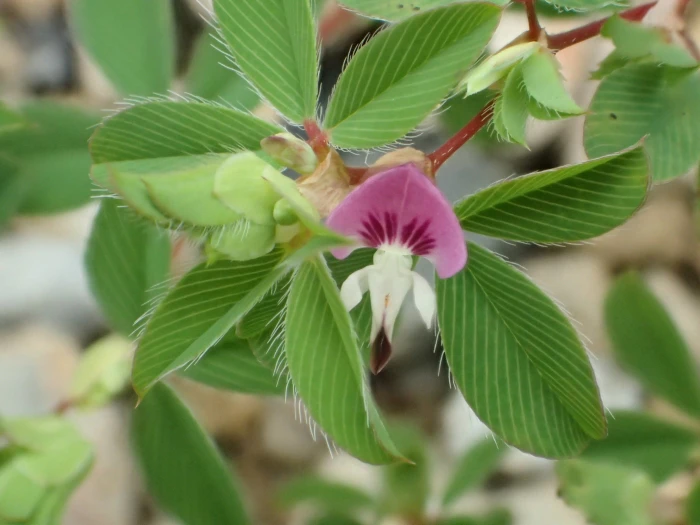Korean Clover
(Kummerowia stipulacea)
Korean Clover (Kummerowia stipulacea)
/
/

Tanya Riseman
CC BY 4.0
Image By:
Tanya Riseman
Recorded By:
Copyright:
CC BY 4.0
Copyright Notice:
Photo by: Tanya Riseman | License Type: CC BY 4.0 | License URL: http://creativecommons.org/licenses/by/4.0/ | Rights Holder: Tanya Riseman | Publisher: iNaturalist | Date Created: 2020-08-16T17:12:51-07:00 |
























Estimated Native Range
Climate Requirements for Shaker Heights, Ohio
| This Plant | Your Site | Plant Suitability for Your Location | ||
|---|---|---|---|---|
| • Precipitation | 12" - 126" | 39" | Aquatic | Aquatic |
| • High Temp. | 68°F - 94°F | 83°F | Your summer temperatures are normal for this plant. | Excellent |
| • Low Temp. | -33°F - 60°F | 18°F | Your winter temperatures are normal for this plant | Excellent |
This plant should grow very well at your location without additional irrigation.
Summary
Kummerowia stipulacea, commonly known as Korean clover, is an annual herb that is native to grasslands, open woodlands, and roadsides in East Asia, including China, Japan, Korea, and parts of Russia. It has been introduced to the eastern United States, where it can behave invasively. This plant typically grows up to 24 inches tall and features prostrate, spreading, or erect stems with trifoliate leaves. The foliage is medium green, and the plant forms a low, bushy mound. It produces two types of flowers: cleistogamous, which are self-pollinating and not showy, and chasmogamous, which are purple-blue and more conspicuous, blooming in late summer.
Korean clover is valued for its ability to fix nitrogen in the soil, which can improve soil fertility. It is also used as a cover crop or for erosion control due to its fast growth and spreading habit. In cultivation, it prefers full sun to part shade and is tolerant of a wide range of soil types, though it thrives in well-drained soils. While it can be a useful plant in certain applications, it is important to be aware of its invasive potential outside its native range and to manage it accordingly to prevent unwanted spread.CC BY-SA 4.0
Korean clover is valued for its ability to fix nitrogen in the soil, which can improve soil fertility. It is also used as a cover crop or for erosion control due to its fast growth and spreading habit. In cultivation, it prefers full sun to part shade and is tolerant of a wide range of soil types, though it thrives in well-drained soils. While it can be a useful plant in certain applications, it is important to be aware of its invasive potential outside its native range and to manage it accordingly to prevent unwanted spread.CC BY-SA 4.0
Plant Description
- Plant Type: Herb
- Height: 1-2 feet
- Width: 1-2 feet
- Growth Rate: Rapid
- Flower Color: Purple
- Flowering Season: Spring
- Leaf Retention:
Growth Requirements
- Sun: Full Sun, Part Shade
- Water: Low
- Drainage: Fast, Medium, Slow
Common Uses
Erosion Control, Low Maintenance
Natural Habitat
Grasslands, open woodlands, and roadsides in East Asia
Other Names
Common Names: Common Lespedeza, Korean Lespedeza
Scientific Names: Kummerowia stipulacea, Kummerovia stipulacea, Lespedeza stipulacea, Lespedeza stipulaceae, Lespedeza stipulacei, Lespedeza striata, Lespedeza striata subsp. stipulacea, Lespedeza striata var. stipulacea, Microlespedeza stipulacea
GBIF Accepted Name: Kummerowia stipulacea